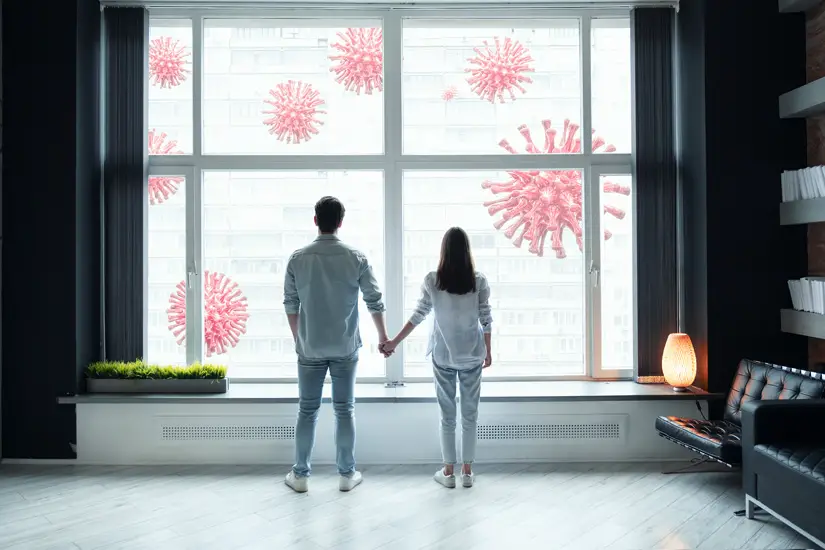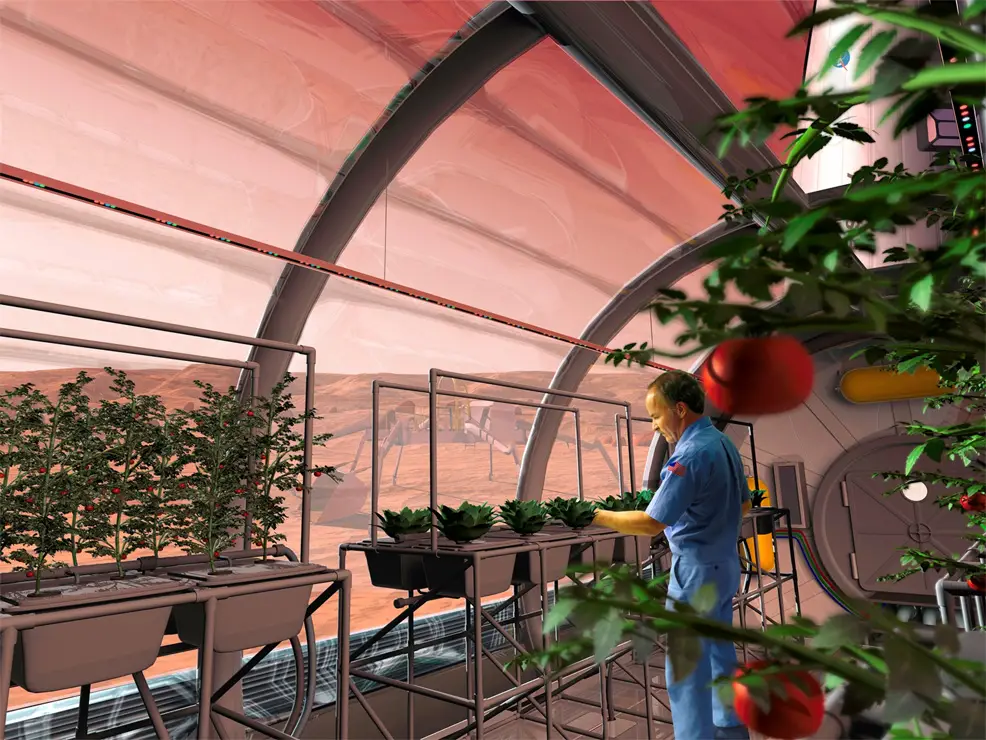
23rd September 2022 Climate extremes, viruses, social unrest ... war? We desperately need a Plan B This is a guest piece by Richard Fox – retired media director, now a singer/songwriter and blogger who writes on a variety of topics. You can read more at his WordPress site and also follow him on Twitter.
At the climactic conclusion of COP26 – the Conference of the Parties, held in Glasgow in November last year – reassuring words and positive commitments rained down from the political stratosphere, as commentators hailed agreements on net zero, the ending of deforestation, cutting methane emissions, clean energy, low carbon and other snappy, climate-related jargon. But of course this near-unanimity of purpose has been overshadowed on the ground by a climate of growing fear: more and more people dealing with bread-and-butter, real-world financial problems, with extremes of heat and cold in the here-and-now, awaiting the next tactics employed by stealthy viruses and unnerved by talk of possible social unrest, stirred up by macro-economic ineptitude and political apathy in the face of a once-in-a-century cost of living crisis – all set against the disturbing background music of a growing nuclear threat. So ... given the likelihood that all (or too many) of the COP26 promises prove to be hogwash; and given the failing abilities of science, industry, commerce and politics to keep us safe in the 21st century, I suggest we need to take matters into our own hands. Now. We must do far more to protect ourselves. As social, economic and political turbulence mean that the best laid plans of mice and men are being postponed, re-prioritised and often torn up, it's time to draw up a Plan B: to assume the powers-that-be will fail, that their laudable/stated/cynical goals will not be reached ... and make short-, medium- and long-term arrangements accordingly.
Lockdown showed us that staying inside, in a controlled environment, was a reasonably effective way of protecting ourselves from virus-carrying outsiders. Treating our home as an above-ground "cave" was a cheap and simple means of creating a micro-environment in which we were sheltered from the extreme dangers of the pandemic, not least when the virus was rampant. Home became a place of refuge. We should look back on that time and ask what lessons we can learn. It feels unlikely that our sociable population will become any less prone to viral attack in the foreseeable future. A recent Radio 4 programme entitled How Covid Changed Science highlighted the variety of viral menaces that stalk the planet. Around a dozen epidemic or pandemic virus outbreaks have already occurred in the twenty-first century, meaning that they're cropping up every couple of years. Among them are the usual suspects, as well as some not-so-familiar names: West Nile Virus, SARS, pandemic 'flu, Zika, chikungunya, norovirus, MERS-Cov, Covid-19 and monkeypox. Covid is becoming endemic, meaning that it will remain established in the population, with a consequent need for regular vaccination, just like we have for 'flu. But vaccines don't give total protection and long Covid can be a horrendous problem. Covid made us take action, with the result that the cost-efficiency, health, and environmental advantages of home-working were suddenly test-marketed on an enormous scale and we saw the indisputable attractions of (as it were) man- and woman-caves. Objections by anti-vaxxers notwithstanding, vaccines were the first line of defence, but ultimately the disease was held in check in large part by the lockdown strategy. Staying in became the new going out – a new, if temporary, normal.
Aside from potential attacks on our respiratory tracts, we're increasingly and rightly unnerved by changes in our macro-environment. When record-breaking temperatures hit the UK recently, many of us followed the weather forecasters' advice, opening up doors and windows in the morning just long enough to suck in the cool air, before – and no doubt there was a "sweet spot" moment of optimum temperature – carefully closing them all and blocking out as much of the glare and radiant heat as possible. Staying in was just common sense. Important conferences between the great and the good are all very well; but where are the plans to ensure air conditioning is a legal requirement for the approval of new house-building? Less than 5% of homes in the U.K. have air-conditioning, compared with 90% in the US and even higher figures in some other countries. At the other end of the thermometer, we've been doing the right thing as far as double-glazing is concerned – 93% have some level of this form of insulation. But loft (66%) and cavity wall (70%) insulation figures still leave a huge amount to be desired, especially given the potential cost-savings. In the cold light of day, we're beginning to pay the price for under-investment in insulation. Our caves are unfit for purpose. As energy costs rocket, the frozen chickens are coming home to roost. Now all the talk is about 'warm banks'. Just like food banks, warm banks will be a practical short-term strategy for using communal indoor space more efficiently, prior to installing a government which will swiftly address the underlying problems of insulation, fuel poverty, price gouging and how to maximise development of renewables. A large number of local government schemes are already underway across the country, while central government moves at a glacial pace, "focussing on giving people the resources they need in their own homes".
Places of refuge need not only be built-in to our homes. In World War II, many people took cover in air raid shelters during bombing raids, often wearing gas masks; hundreds of thousands of Londoners often spent the night deep below the surface, on platforms on the Underground; and we have seen that, in the Far East, locations prone to tsunamis put in place reinforced buildings specially designed as safe havens from surging seas. Plan A can carry on, just as climate degradation carries on. Just recently came news that major sea level rise caused by the melting of Greenland's ice cap is now inevitable. It's too late to stop that, say researchers Jason Box et al, in a study published in the journal Nature Climate Change. There will be more COPS. But there will also be more geo-political manoeuvring to mitigate the effects of rocketing energy costs. There will be more ignoring of the promises made. Excuses will abound. As Greta Thunberg said after COP26: "We need immediate drastic annual emission cuts unlike anything the world has ever seen. The people in power can continue to live in their bubble filled with their fantasies, like eternal growth on a finite planet and technological solutions that will suddenly appear seemingly out of nowhere and will erase all of these crises just like that. All this while the world is literally burning, on fire, and while the people living on the front lines are still bearing the brunt of the climate crisis." But ... Greta Thunberg and the proliferating activist groups such as Extinction Rebellion and Project Pressure are part of the high level worldwide debates and intellectual clashes as much as politicians, industrialists, the media and the others. Yes, it's good to talk, though the powerful players engaged in this kind of deadly in-fighting are a side-show alongside what increasingly seems like an inevitable slide into disaster. Focusing much more on controlling our own micro-environment while the world's politicians and businesspeople "sort everything out" is surely only common sense. For in parallel with continuing efforts to fend off disaster, we're moving inexorably into an era when we'll need to think much more of Mother Earth as a hostile environment, maybe like a planet on which we've just landed. (I wrote about the late James Lovelock's fascinating Gaia hypothesis a while back). It's increasingly clear that things are getting – have got? – well beyond our control. With, for instance, reservoirs running dry, runways melting, raw sewage poisoning the waves, farmers' chemicals killing our bees – and many other animals under threat – and plans to develop new oil and gas drilling, we nowadays find ourselves concurrently attacking and defending the environment. In 40 or 50 years' time, we may well need to apply lessons learned from adapting to life on Mars to our own homes back here on Earth. The home owner of the future may insist on a hi-tech greenhouse extension attached to his/her new abode, like this NASA conceptual rendering of a greenhouse on the surface of Mars.
Those of us, myself not included, who had a basement, would no doubt have found it a welcome retreat on days when UK temperatures were at their very highest recently. Our own integral garage was quite cool; but I'm guessing a basement would have been even more hospitable. Staying in our home-caves is also an attractive option when climate change brings freezing snow, floods, and storms. Even a single room or basement fitted out as a dedicated refuge where temperature, air quality and safety from flood could be strictly controlled (if affordable) would be a logical addition to most homes, either in new-builds or retro-fitted. Our everyday life still allows for visits to family, local supermarkets, football stadia and the seaside. A kind of normality still reigns supreme. But the list of underlying issues is ever-growing: Covid and other diseases, environmental changes, the threat of war, increasing crime and social unrest due to insurmountable financial issues, poor harvests, energy shortages, coastal erosion, increases in wildfires and floods, etc. Maybe this is one of the reasons why the UK government recently announced that a new Emergency Alert system was about to be launched. Such a system would no doubt be particularly relevant in the event of possible nuclear attack. Humanity is "just one misunderstanding away from nuclear annihilation", said António Guterres, Secretary-general of the United Nations, recently. How's your bomb shelter looking?
Keeping the outside world out is going to be the key to a long-term future for the human race, for all kinds of reasons. Environmentally, it appears that we have passed the point of no return unless politicians and businesses worldwide can pull off the seemingly impossible. It's surely prudent to let them have their meetings and make their fragile treaties; but at the same time, we should assume the worst and get on with protecting ourselves – individually and communally – in whatever ways we can. In the last few weeks, a project in Saudi Arabia which was unveiled about eighteen months ago has received global publicity and attention, and just may signal a pathway towards longer-term urban planning elsewhere. Many commentators on social media doubt that THE LINE will ever get built. But in my view the announced designs seem to address many critical issues. This revolutionary, awe-inspiring city-in-a-building is 200 metres wide, 170 kilometres long and 500 metres high. It will eventually accommodate nine million residents and be constructed on an area of only 34 square kilometres. This relatively small footprint will use less land when compared to other cities of similar capacity and will contribute to conserving 95% of NEOM's land. THE LINE, it is claimed, puts nature ahead of development, envisioning a future for urban communities without streets, cars, and emissions. Unlike traditional cities, it will run on 100% renewable energy and prioritize health and well-being over transportation and infrastructure. Maybe this is what the future looks like, where communities are truly communal, where we automate the process of managing our cities, and they are transformed into machines to protect us? But then again ... what will happen when the machine stops?
Comments »
If you enjoyed this article, please consider sharing it:
|










